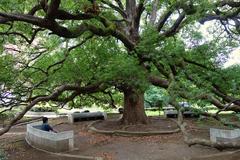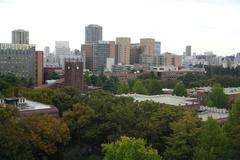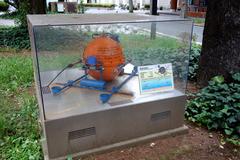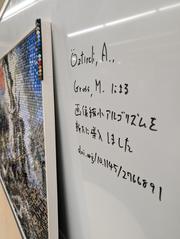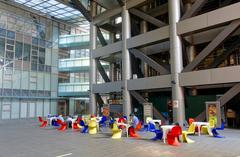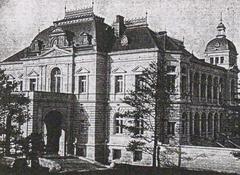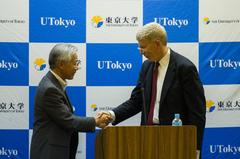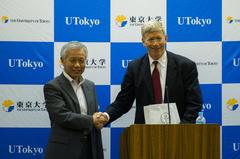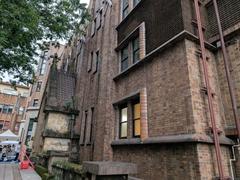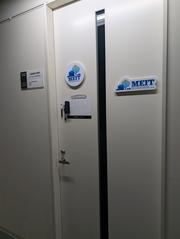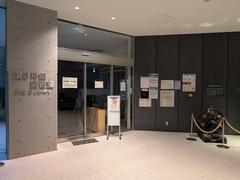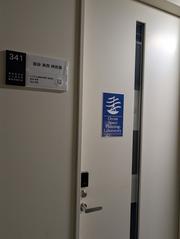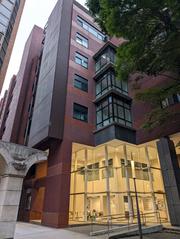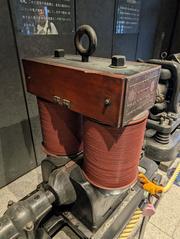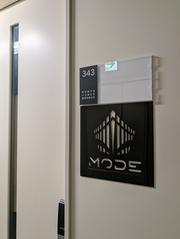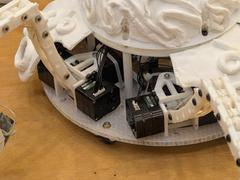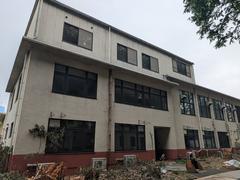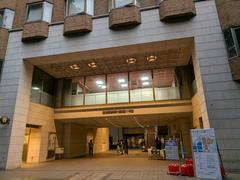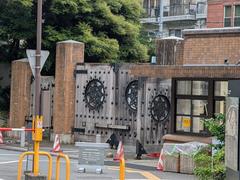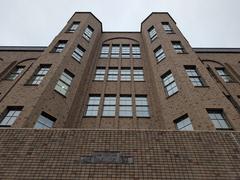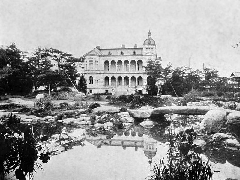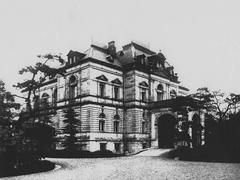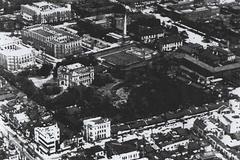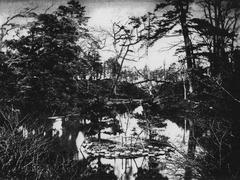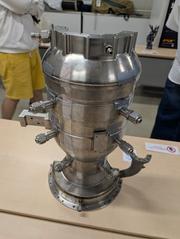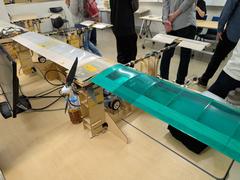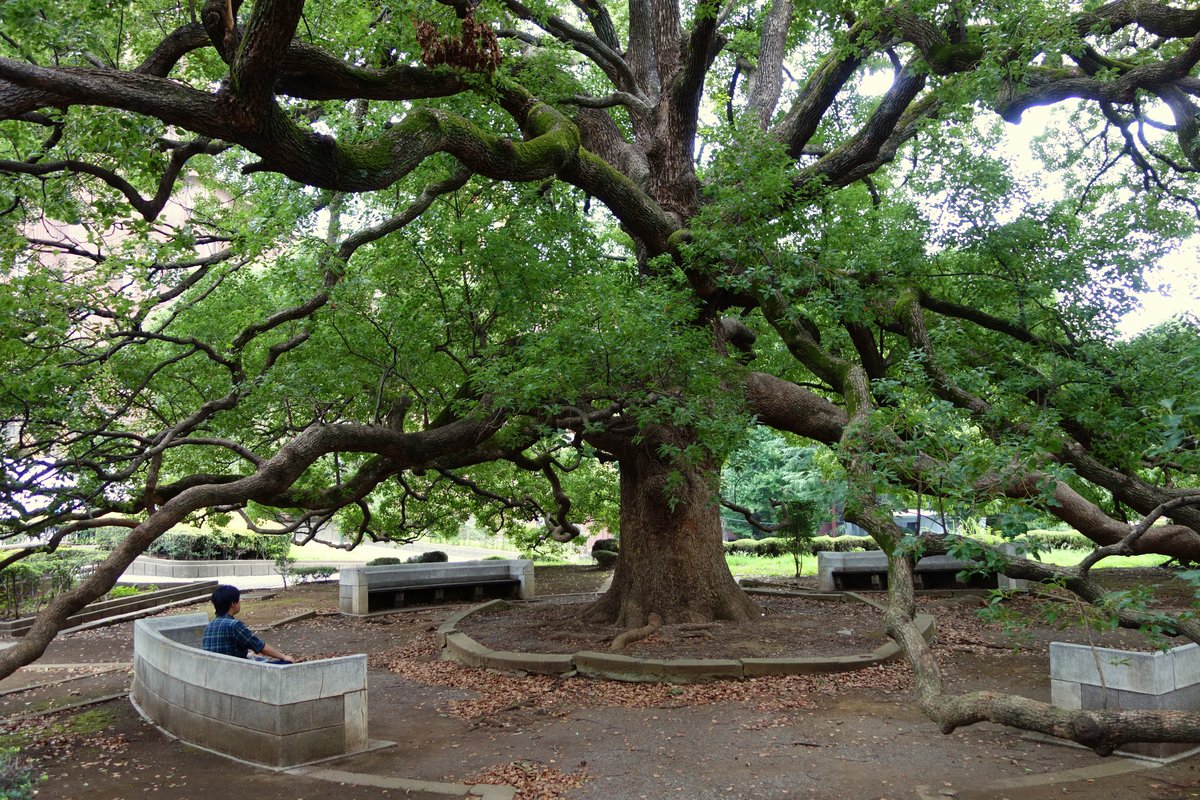
Hongō Campus Tokyo Visiting Hours, Tickets, and Historical Sites Guide
Date: 14/06/2025
Introduction: History and Significance of Hongō Campus, University of Tokyo
The Hongō Campus of the University of Tokyo, commonly known as “Todai” or “UTokyo,” stands at the intersection of Japan’s academic excellence and historical legacy. Established in 1877 during the transformative Meiji era, the campus is built upon the former estate of the Maeda clan, once a powerful feudal family. This transformation from a samurai residence to a center of modern scholarship marks the campus as a living testament to Japan’s evolution from feudal isolation to its position as a global leader in education and research (University of Tokyo History, Learn about Japanese universities: Tokyo University).
Hongō Campus is renowned for its unique blend of traditional Japanese and Western architectural styles. Iconic landmarks include the Akamon (Red Gate), a vibrant relic from 1827, and the neo-Gothic Yasuda Auditorium, completed in 1925 after the Great Kantō Earthquake (visiting-japan.com, University of Tokyo Campus Guide). The campus is not only a hub of academic activity but also a cultural and historical site reflecting Japan’s intellectual journey and social values.
Today, Hongō Campus hosts faculties in law, medicine, engineering, and the sciences, fostering a diverse and international community with more than 2,100 international students. Its tree-lined avenues, especially the ginkgo-lined main avenue, tranquil ponds such as Sanshiro-ike, and meticulously preserved cultural sites create an inviting atmosphere for visitors and scholars alike (topuniversities.com).
This comprehensive guide explores the campus’s historical development, architectural highlights, cultural significance, and provides practical visitor information, including visiting hours, tickets, accessibility, nearby attractions, and travel tips. Whether you are a history enthusiast, architecture lover, student, or traveler, this guide will help you fully appreciate one of Tokyo’s most iconic educational and historical landmarks (University of Tokyo Hongo Campus, tsunagujapan.com).
Table of Contents
- Historical Overview
- Visiting Hongō Campus: History, Cultural Significance, and Visitor Guide
- University of Tokyo Hongo Campus: Visiting Hours, Tickets, and Key Attractions
- Must-See Attractions
- Visiting Hours, Tickets, and Accessibility
- How to Get There
- Tips for Visitors
- FAQ
- Conclusion and Call to Action
- References and Resources
Historical Overview
Origins and Foundation
Hongō Campus was founded as part of Japan’s Meiji-era educational reforms, unifying several government schools to foster a modern, Western-influenced higher education institution (University of Tokyo History). The selection of the Maeda clan’s former estate as its site reflected the shift from feudal power to academic leadership (Learn about Japanese universities: Tokyo University).
Evolution Through the Imperial Era
The university became the Imperial University in 1886, later renamed Tokyo Imperial University in 1897. This period saw expansion of disciplines and the construction of landmark buildings, many of which survive today (University of Tokyo History).
The 1923 Great Kantō Earthquake and Reconstruction
The Great Kantō Earthquake devastated the campus, destroying the library and rare collections. Reconstruction introduced earthquake-resistant architecture, most notably in the Yasuda Auditorium (Learn about Japanese universities: Tokyo University).
Postwar Reforms and Modernization
Post-WWII reforms democratized the university and expanded its scope, integrating new campuses and disciplines. Hongō remains the intellectual core, hosting key faculties and research institutes (University of Tokyo Faculties).
Architectural and Cultural Significance
Hongō Campus’s blend of historic and modern architecture—Akamon, Yasuda Auditorium, the General Library—reflects Japan’s respect for tradition and drive for innovation (University of Tokyo Campus Guide).
Role in Japanese Education and Society
As Japan’s top-ranked university, UTokyo has produced Nobel laureates, prime ministers, and global leaders. It reflects meritocracy, discipline, and Japan’s broader educational values (Asia University Rankings 2013, The Value of Academic Prestige and Excellence in the Japanese Education Scene, Exploring Education and Cultural Values in Japan).
Contemporary Developments and Internationalization
Recent decades have seen efforts to internationalize the student body and curriculum, with English-taught programs and increased global partnerships (The Importance of Multicultural Education and Diversity in Schools in Japan, Learn about Japanese universities: Tokyo University).
Enduring Legacy
Hongō Campus mirrors Japan’s journey from feudal isolation to modern global engagement, symbolizing the transformative power of education.
Visiting Hongō Campus: History, Cultural Significance, and Visitor Guide
Historical Foundations and Architectural Heritage
Origins as a Feudal Estate:
The campus occupies the former Maeda clan residence, with Akamon (Red Gate) as a key surviving structure and Important Cultural Property (visiting-japan.com).
Transition to Academic Excellence:
Founded in 1877, Hongō Campus became the heart of Japan’s first imperial university, rebuilt and expanded after the 1923 earthquake (topuniversities.com).
Academic and Cultural Significance
Intellectual Center:
Home to 10 faculties and 15 graduate schools, the campus is a hub for research and innovation, with a strong international presence.
Architectural and Natural Landmarks:
Key features include the General Library (1928), Yasuda Auditorium, Sanshiro-ike Pond, and the ginkgo-lined avenue, which is especially beautiful in autumn (tsunagujapan.com).
Visitors’ Information
Visiting Hours and Tickets:
- Campus open daily: 8:30 AM to 5:00 PM
- Free general admission; some museums/events may require tickets
Accessibility and Transportation:
- Nearest stations: Hongo-sanchome (Marunouchi and Oedo lines) and Todai-mae (Mita line)
- Wheelchair accessible with bilingual signage
Guided Tours and Tips:
- Guided tours require advance booking; self-guided options available
- Allow 2–3 hours for a comprehensive visit
- Autumn is the best season for scenic foliage
Nearby Attractions:
- Nezu Shrine and Yushima Tenmangu Shrine (seasonal festivals)
- Local cafés and eateries for authentic campus life (tsunagujapan.com)
Symbolism and National Identity
Hongō Campus represents Japan’s modernization, values of discipline and harmony, and literary legacy, hosting events like the May Festival (topuniversities.com).
University of Tokyo Hongo Campus: Visiting Hours, Tickets, and Key Attractions
Campus Layout Overview
Hongō Campus covers 56 hectares in Bunkyō Ward, featuring Meiji-era architecture, modern research centers, and tranquil gardens (University of Tokyo Hongo Campus).
Visiting Hours and Tickets
- General Access: Daily, 8:30 AM – 5:00 PM
- Admission: Free for campus grounds; museums may charge fees
- Guided Tours: Offered periodically; advance reservations required
Main Entrances and Gateways
Akamon (Red Gate):
Historic west entrance, built in 1827, a designated Important Cultural Property (Times Higher Education).
Main Gate:
Leads to the ginkgo-lined avenue and Yasuda Auditorium.
Central Axis and Iconic Landmarks
Avenue of Ginkgo Trees:
Main walkway, spectacular in autumn.
Yasuda Auditorium:
Red-brick neo-Gothic building, completed in 1925, symbolizing academic tradition.
Academic and Research Buildings
- General Library: Over 1.2 million volumes, with historic reading rooms.
- Daiwa Ubiquitous Computing Research Building: Modern IT research.
- Faculty Buildings: From Meiji-era brick to modern complexes.
Cultural and Historical Sites
- Sanshiro Pond: Edo-period garden, scenic throughout the year.
- Kaitokukan: Former guesthouse, now for special events.
- Statues and Monuments: Including Hidesaburo Ueno and Hachiko.
Museums and Public Spaces
- University Museum: Natural history and science exhibitions.
- Museum of Health and Medicine: Interactive medical science exhibits.
Gardens and Green Spaces
- Snake Mound: Stone lantern with local legends.
- Chinese Guardian Lions: Symbolic stone guardians.
Dining, Shops, and Visitor Facilities
- Communication Center: Maps, brochures, souvenirs.
- Cafeterias/Coffee Shops: Japanese and Western fare for visitors.
Navigation and Accessibility
- Bilingual signage, accessible buildings, nearby subway stations.
- Bicycle parking available.
Notable Surrounding Areas
- Ueno Park: Neighboring district with museums and festivals (Adventure Backpack).
Must-See Attractions
- Akamon (Red Gate): Historic symbol, photo spot.
- Yasuda Auditorium: Neo-Gothic architectural icon.
- Ginkgo Tree Avenue: Famous autumn foliage.
- Sanshiro Pond: Tranquil escape within campus.
- Yayoi Campus & Bridge: Adjacent campus with statues and greenery.
- Museum of Health and Medicine: Medical history exhibits.
- Graduate School of Science Building: Scientific and architectural interest.
- University Co-op & Communication Center: Souvenirs and visitor info.
- Dining Options: Cafeterias, coffee shops, and panoramic restaurants.
- Koishikawa Botanical Garden: Historic garden nearby.
Visiting Hours, Tickets, and Accessibility
- Campus: Open daily from 8:30 AM to 5:00 PM; free entry.
- Museum of Health and Medicine: 10:00–17:00 (closed Wednesdays).
- Koishikawa Botanical Garden: 9:00–16:30 (closed Mondays; small fee).
- Accessibility: Mostly barrier-free, but some older buildings may have limited access.
How to Get There
- By Tokyo Metro:
- Todaimae Station (Namboku Line)
- Hongo-sanchome Station (Marunouchi Line, Toei Oedo Line)
Both within a 5-minute walk of the main gates.
Tips for Visitors
- Visit in autumn for spectacular ginkgo foliage.
- Check the university’s website for special events and tour availability.
- Download a campus map in advance.
- Wear comfortable shoes for walking.
FAQ
Q: What are the campus visiting hours?
A: 8:30 AM to 5:00 PM daily; some facilities may vary.
Q: Is there an entrance fee?
A: General campus access is free; some museums and gardens may charge.
Q: Are guided tours available?
A: Offered periodically; check the official website for details.
Q: Is the campus wheelchair accessible?
A: Most areas are accessible; some historic buildings may have limited access.
Q: How do I get to the campus by public transport?
A: Use Todaimae (Namboku Line) or Hongo-sanchome (Marunouchi or Oedo Line) stations.
Conclusion and Call to Action
The Hongō Campus of the University of Tokyo is a destination that encapsulates Japan’s educational and cultural evolution. Whether you’re drawn by its history, architecture, or natural beauty, the campus provides a profound and enriching experience. Plan your visit today, explore its iconic landmarks, and immerse yourself in the vibrant academic culture.
Enhance your visit with the Audiala app for interactive maps, guided tours, and cultural event updates. Stay connected on social media for expert tips and exclusive content on Tokyo’s historical sites.
References and Resources
- University of Tokyo History
- Learn about Japanese universities: Tokyo University
- Visiting Japan: Hongō Campus
- University of Tokyo Campus Guide
- The Value of Academic Prestige and Excellence in the Japanese Education Scene
- Exploring Education and Cultural Values in Japan
- Asia University Rankings 2013
- University of Tokyo Hongo Campus Official Site
- Top Universities: University of Tokyo Profile
- The Importance of Multicultural Education and Diversity in Schools in Japan
- Tsunagu Japan: Walking Around the Academic Site Hongō
- Times Higher Education: 10 Most Beautiful Universities in East Asia
- Adventure Backpack: Tokyo Highlights
